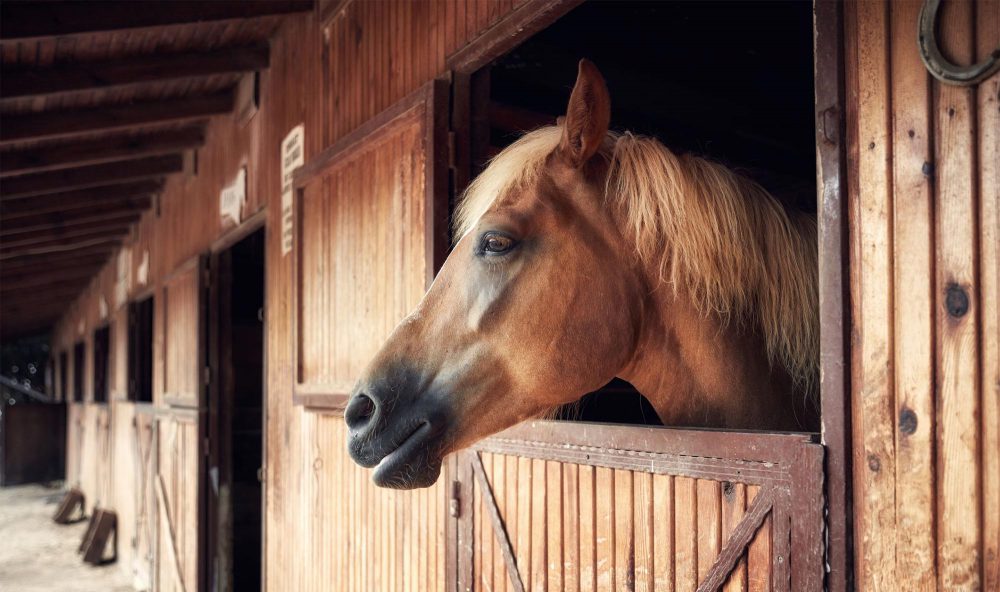Confinement
Racehorses are typically confined to stables. For up to twenty two hours per day they are stuck in a stall about the size of a standard bedroom.

Horses can be confined for up to 22 hours per day photo: cagkansayin / Getty Images
The reasons given for this are:
- Racehorses respond better to humans and racing when isolated
- They are less likely to sustain injury in a stall as opposed to being outside.
- It is more economical.
- It is easier to manage and care for the horses.
“We keep horses in jail”
– C.S. Hayes, trainer and owner, in a December 2005 interview
Such confinement leads to abnormal behaviour. Wood chewing, box walking (round and round the stall), wind sucking (gripping an object with their teeth and sucking in air) and weaving (swaying the head, neck and forequarters from side to side) are all signs of frustration.
In a Victorian survey, 13% of horses showed 1 or more forms of abnormal behaviour. Factors which reduced these abnormalities included more access to forage such as hay, straw bedding, and visual contact with other horses, in other words, opportunities to express more of their natural behaviour .
Next: Performance enhancement
